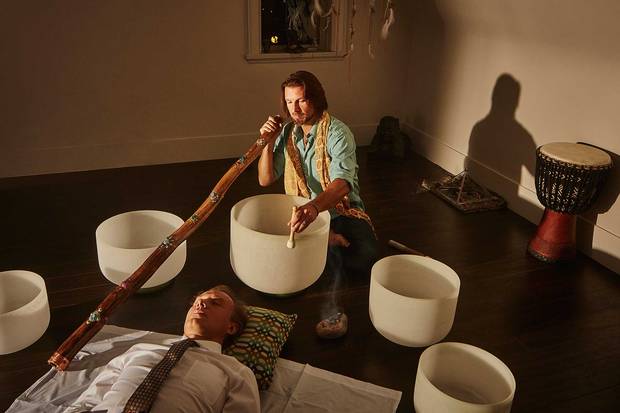Kevin was once a successful entrepreneur, riding the crest of the digital revolution. In 2009, he sold the online media company he'd co-founded with a friend for $120 million (U.S.). "I was living in Manhattan," the Toronto native tells me when we talk on a crisp sunny afternoon in July. "I no longer had responsibilities, and I had too much money and too much time on my hands. Those weren't the reasons why I used drugs. But, if anything, they were a catalyst."
A tall and athletic 40-something with a healthy spray of greying hair, Kevin (a pseudonym) is in recovery from a cocaine addiction. On the day I meet him, his bare feet stretch out from his jeans as he strides through Helix Healthcare in the golden-mile Toronto neighbourhood of Yorkville, where he began receiving treatment two years ago. He talks about going back to work after many years away, about being eager to reintegrate himself as a "functioning member of society."
Helix is like no other recovery facility, Kevin tells me. (He should know, having spent time at a rehab in Muskoka before becoming a Helix convert.) Here, Kevin has seen a range of counsellors and practised a suite of treatments in order to exhume the reasons why he began using. Not once have his therapists labelled his plight a disease, bucking the 50-year-old medical definition of addiction as illness. Instead, they helped him deal with feelings of inferiority going back to when he was a child. That was his "trauma," and according to a school of science around addiction that's taken shape only in the last 20 years, trauma has a way of wiring our brains to crave addictive behaviour.
For Helix clients, getting to the core of trauma involves untraditional means. Kevin and I are here to take a "sound bath." A dream catcher hangs over a series of large, quartz crystal bowls placed on the ground. A therapist named Philip Jacobs smudges the room with sage.
Kevin and I lie down with our heads pointed in the direction of the bowls. Philip covers each of us with a blanket. When he starts to chant, there's an incredibly full resonance in the room coming from this "shamanic singing" (he also used to sing in a rock band), and from the bowls and drums he plays. The sounds start reverberating in my sternum. Kevin, next to me, grunts and shuffles around. He coughs and has spasms, as if possessed. Philip later tells me that people react in all sorts of ways during a sound bath. Many burst into tears. For my part, I'm sinking into the floorboards. My clenched jaw has been vibrated loose. Maybe my skepticism, too. I can't move.
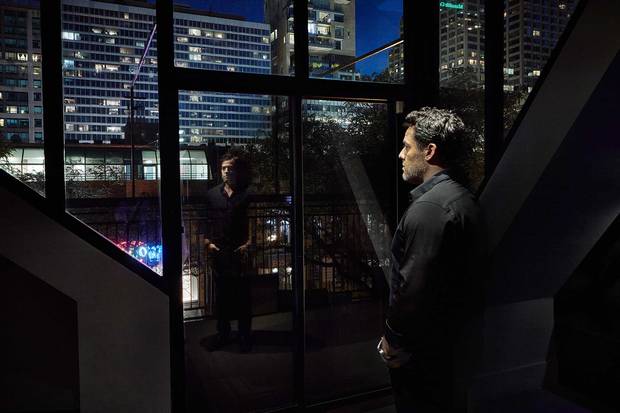
Mark Rivkin, who made his fortune at Cryptologic, reflects at Helix, the clinic he founded in Toronto’s Yorkville neighbourhood.
Peter Andrew Lusztyk
Helix was founded by 45-year-old Torontonian Mark Rivkin, who has a couple of things in common with Kevin. Rivkin made a small fortune on the Internet—in his case, with a company called CryptoLogic, a pioneer of online gambling. And, like Kevin, Rivkin saw his drug and alcohol consumption spin out of control after he cashed out of his business.
Since opening in Toronto in 2014, Rivkin's clinic has treated roughly 800 clients. About 5.2 million Canadians abuse alcohol. And approximately 400,000 people take psychoactive pharmaceuticals recreationally, including opioid pain relievers like Oxycontin, stimulants like Adderall and downers like Valium—a relatively small proportion of the population but significant in that the number is steadily rising. Among professionals and executives, the percentages are about the same as in the general population, addiction experts report. But the culture of addiction has its own special imprint in the executive suite.
Indeed, Helix has arrived at a peculiar time in corporate culture in Canada, where drinking and drugs are as much the stuff of legend as they are closely guarded secrets. On the one hand, there's a lore of drunken deal-making that holds a certain sway over Bay Street's macho overlords. Much of that goes back to such legendary money-makers as Gordon Capital in the 1980s and '90s, which graduated a long line of powerful men from a culture of constant Scotch benders, sex in the bathroom and romps on the company boat. Profit, pressure and partying were a vicious (if lucrative) cycle. It's not a long leap from Gordon's ethos to that of a new generation of corporate ballers who thrive on bottle service and chemical hijinks.
When private struggles become public, however, those very great men suddenly become tragic case studies. There was the case of a Gordon alumnus with a drinking problem whose body was pulled out of a lake in cottage country. There was the cable czar who stepped down from his job after an inebriated, insult-laden performance at an analyst lunch. There was the merchant banker with a substance-fuelled past who grieved the loss of his wife by dropping $100,000 on strippers. The business world, like any world, operates under a Rashomon effect when it comes to drinking and drugs: Some people see flamboyant, hard-partying peacocks where others see doleful cautionary tales.
Mark Rivkin knows there is no glamour in bottoming out. He hatched his plan for Helix after several attempts at recovery, including one that stuck—a stay at Passages, a resort-like facility in Malibu. In 2013, clean and sober, Rivkin reached out to Jesse Hanson, a Passages therapist he admired, with a proposition. Why not go into business together? His idea was to create an upscale health centre that would address addiction by teasing out its root causes, everything from being bullied as a child to suffering physical and sexual violence. He wanted the therapies chipping away at these traumas to be a mix of traditional and alternative, like the program he had at Passages. As Rivkin explained to Hanson, that kind of model wasn't the norm in his naturally cynical hometown.
Maybe it was time to change that. But was Toronto ready?
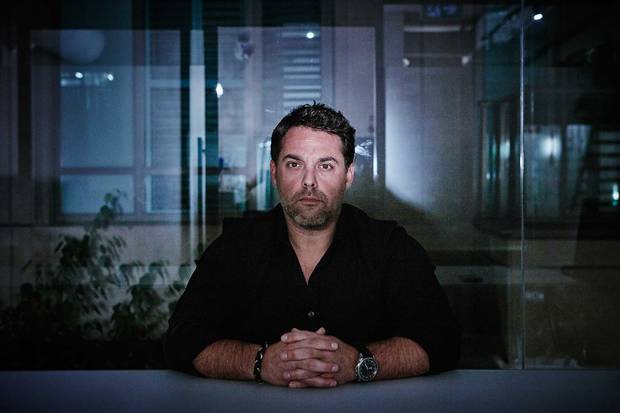
Mark Rivkin of Helix
Peter Andrew Lusztyk
Before Mark Rivkin became an addict, he wouldn't have touched a sound bath with a 10-foot pole. When I ask if he was ever open to mindfulness or meditation as a younger man, he's firm. "Not a chance."
Rivkin grew up in a middle-class Jewish family at Finch and Don Mills, a diverse suburban part of Toronto that skirted the poverty line. "I had friends from every different culture," Rivkin says. "It was a rough neighbourhood, but it was also great. My bar mitzvah looked like the UN."
Practically everyone in his family was involved in Amram, a giftware and toy business originated by Rivkin's maternal grandfather in 1965. "We did a lot of plush," Rivkin says, reverting back to industry lingo. "Stuffed animals," he clarifies.
His dad, uncles and aunt worked at Amram, joined by his younger sister, Jennifer, and his brother, Andrew, on weekends and holidays. Rivkin himself picked and packed merchandise. The company, in other words, was fundamental to the family's identity—so it was devastating that Amram ran into financial trouble while Rivkin was in junior high, forcing the family to sell the business. "It was a difficult time for everybody," he says. "A lot of families lived off that one business."
Rivkin graduated from the local public high school and then from Western with a degree in philosophy. He wrote the GMAT but stalled on going to get his MBA. His brother, having earned a degree in commerce from the University of Toronto, was similarly unsure about his next move.
In 1995, living back at home with their parents, the brothers struck up a conversation with a family friend. "How do you make money on the Internet?" they wondered. Two ways, said the friend: porn or
gambling. Even in that Jurassic era of the Web, the former was already getting saturated. But the latter was not. As lifelong computer geeks and video gamers, the brothers decided to set up shop in their folks' basement and become—somehow—first to market with an innovation that would make virtual gambling more fluid. Their company developed a secure way for players to place bets and transfer real money, at a time when nobody wanted to give out their credit card number online.
By the time it hit Nasdaq in 2000, CryptoLogic had about $80 million in the bank, a market capitalization of just under $130 million (U.S.)—and a simmering stakeholder problem on its hands. The brothers were at the helm and together owned 50% of the business, but key investors were nudging them to step down so that they could bring in more ex-perienced executives. The Rivkins consented. They stayed on for a few years as directors, but then the brothers sold their stakes and said goodbye for good. Mark won't say how much he cashed out for, but at the time he left, the company was worth more than $200 million (U.S.).
In therapy at Passages, he drilled down to why the years that followed CryptoLogic were so miserable. He had a happy childhood, his family stood by him when he was at his nadir, and the Rivkins remain a close unit to this day. But his trauma still could be traced back to early years: He was routinely bullied as a child. When we spoke, he also nodded to sibling rivalry—there were times he and Andrew butted heads at CryptoLogic. "We've always been close, but yes, there was tension," he says. He also maintains that CryptoLogic turned him into a Type A personality who was always go, go, go. It was antithetical to who he really is. His "authentic self," to use a phrase from therapy, was never comfortable in the skin of a workaholic.
Rivkin first checked into a 12-Step program in 2007. He was 36, struggling in his marriage, with a young son at home in Toronto and millions of dollars in the bank. He was also an addict with a particular reliance on painkillers. The problem stemmed from a herniated disc that spelled days at a time in bed, downing his meds. When his back got better, he didn't stop self-medicating.
He had traded burning out for checking out. Although he invested in other businesses, he hadn't come close to that first hit of success he had had in his 20s. Rivkin's rudderless state had dredged up old anxieties: He was not good enough, he was not smart enough. He'd been swallowing hard on these insecurities all of his life.
In the 12 Steps—the code of Alcoholics Anonymous—he was told he was powerless to the substances he abused. He was told to surrender to a higher power, whoever that God might be, and to make amends. "They tell you you're an addict and that you're always going to be an addict," says Rivkin. "They've been using that mantra for 75 years in AA meetings in church basements." Without a plan to chisel down to the crux of his addiction, he lasted a week or two in each of the local programs he signed up for. Eventually, he went a radically different route.
Rivkin checked into Passages, named by Forbes as one of the best "luxury places to dry out." He had heard about its celebrity clientele, but the fact that Mel Gibson, David Hasselhoff and Andy Dick had stayed there wasn't exactly a strong endorsement. What appealed to Rivkin most was that Passages didn't do the 12 Steps. Instead, rehab meant a program of talk therapy, meditation, tai chi, spiritual counselling, ropes courses (à la Outward Bound) and stuff that was even farther out, like equine-assisted psychotherapy. For someone who'd never as much as taken a yoga class, the Pacific Coast, touchy-feely menu was a departure. But Rivkin had nothing to lose. He also didn't have to give up his phone or cut off ties with the outside world to stay there. He signed up at over $50,000 (U.S.) for a month.
A short while into his stay, Rivkin took a class called "Align the Spine," led by Hanson. With his long, dusty blond hair, bare feet, puka shells and board shorts, Hanson was the polar opposite of Rivkin's buttoned-down Toronto guy. "The first thing I remember thinking is, 'He's a free-wheeling spirit,'" Rivkin says. "It didn't seem like he had a care in the world." That's what Rivkin wanted for himself.
Hanson's evident contentment and genial therapeutic style set him at ease. At Passages, bodywork like "align the spine" is said to help clients pinpoint the negative emotions that fed their addictions. Hanson was particularly skillful in somatic psychology, an alternative medicine focusing on treating the body as a way of freeing up the mind. Hanson was working on his master's in clinical psychology at the time, and eventually added a PhD in the field to his resumé.
The two men stayed in touch after Rivkin left Passages—first during Rivkin's subsequent 18 months of sobriety and then again after Rivkin suffered a relapse and flew back to rehab for another stay.
This time it stuck for good. And one day he reached out to Hanson with an idea.
It took some time to persuade Hanson to give up idyllic Malibu for the frosty north. "I do feel the cultural conservatism here," Hanson says. Ultimately, however, the prospect of a new market won Hanson over. Since they launched Helix, the partners have not only taken care of Bay Streeters but everyone from teenagers to octogenarians—people who want to discreetly get off drugs, beat down anxiety or cope with loss. "We treat people like we would want to be treated," says Rivkin, looking fit and relaxed in his Yorkville headquarters, one of two Helix facilities. "And we're definitely not going to stick you in a church basement."
One thing you get in a church basement with AA is group therapy, a cornerstone of the 12 Steps and a social equalizer—anyone can come, and the treatment is free. At Helix, a boutique facility with a side entrance for discreet comings and goings, the emphasis is largely on working with clients one-on-one. Helix provides executive health care, which is not the kind of health care covered by provincial plans. That's true, too, of most private in-patient facilities, which may cost up to $15,000 for a month-long stay. Sessions at Helix cost between $130 and $180 each. As in the case of Kevin, it often takes many sessions to get to the bottom of things.
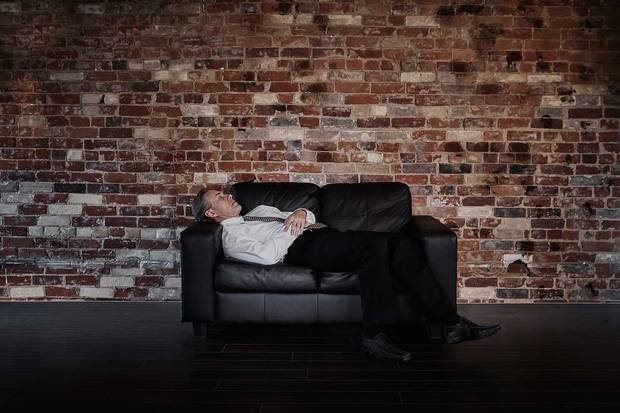
Peter Andrew Lusztyk
In the aftermath of his company's sale, Kevin fell in love, had two children with his wife and found himself living in her home country of Australia. The relationship was a turbulent one. He used more and more coke until "something just shifted—something broke," he says. He soon found himself at an in-patient treatment facility in Muskoka that followed the 12-Step model. He stayed for 45 days, and in the bubble of rehab, everything was okay. He managed to stay clean for several months after he moved back to Australia in 2014.
The vast majority of addicts relapse at least once, and that's just what happened to Kevin. "Before long, I was back in the hole again." His marriage broke up and he decided to return home to Toronto to get healthy, leaving his two daughters behind. Through a former business partner, he found out about Jesse Hanson and Helix.
In his first week as a client, Hanson prescribed a personalized treatment schedule that started with 25 hours of therapies per week for the first month, 20 a week in the next month, and 15 a week in the third month. That first week alone cost him around $5,000. At Helix, Kevin talked to psychotherapists, did mind-body work in sound baths, saw a naturopath and met with an addiction specialist. He did group therapy for only one hour a week, the complete opposite approach of what he'd done in Muskoka. To hear him talk about it, it sounds like a comprehensive program of emotional indulgence. "I saw one therapist just to deal with communication. All we worked on was how to respond to e-mails from my ex-wife," he says. The rigid timetable gave him responsibility—something he had been lacking as an out-of-work, absentee parent.
You can be cosseted all the way to a cure, it seems, but that does not invalidate the 12 Steps. Patricia Davies, a Toronto psychotherapist long associated with the well-known treatment facility Bellwood, underlines the benefits of peer support according to the 12-Step model. "With individual sessions, clients bring to them what they want," she says. In other words, it can be an egocentric exercise, especially for certain members of a business class that live and die by their ego. "On the other hand, when you sit with your peers and hear similar stories from them, that can have a powerful change. It proves to you that you're not alone."
It also proves to you that you're not so special.
Still, Helix gets a thumb's up from Gabor Maté, the well-regarded, Vancouver-based mental health physician, author and speaker who specializes in addiction. Indeed, Maté is an adviser and consultant to Helix. He says he came on board because Helix adheres to the neuroscientific approach that posits addiction as a response to trauma, and because Helix uses a range of methods, including alternative therapies like mind-body work, to reveal that trauma. "They have a multidisciplinary approach grounded in science that's aligned with the way I understand addiction," says Maté. "They're about understanding the way the human brain develops. They're trying to heal the traumatized person." Maté says framing addiction by studying brain development, including neuroplasticity—the ability of the brain to rewire itself—is not taught in medical schools (although it should be). The other distinguishing factor at Helix, says Maté, "is that the therapists are willing to deal with their own trauma." The acknowledgment that we all get damaged is also not taught in medical schools.
If there's anyone who's open about his difficult past, it's Jesse Hanson. I learn about it a day after the sound bath; I'm back at Helix for a sit-down with him. He wears a dolphin charm around his neck. There's a lot to look at in his office—Eastern motifs, instruments and a pair of tall bamboo-looking things in the corner by the window.
"Are those didgeridoos?" I ask.
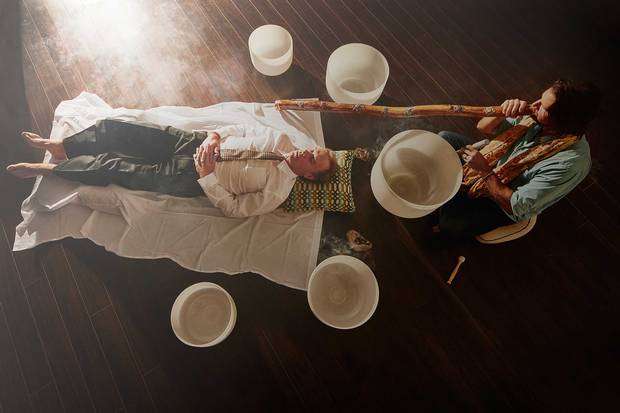
Peter Andrew Lusztyk
Hanson is disarmingly nice and funny. Taking this as a cue, he pulls the largest of the didgeridoos out—a bedazzling instrument he calls Honu, which is Hawaiian for turtle. "Didge therapy," like sound baths, targets the body with deep tones and vibrations. Hanson doesn't just foist it on me. He asks me if I'm open to a demonstration, a courtesy I appreciate. I'm also biting my lip trying not to crack up. But then I think: If you haven't toned down your cynicism by the time you hit 40, there's something wrong with you. So when a didgeridoo is being blown around my head, I go with the flow.
For Hanson himself, the major blow of his childhood was being told by doctors at the age of 9 that his dad was dying and that he should get prepared for it, a concept he was incapable of processing. Hanson's father suffered from idiopathic pulmonary fibrosis, an autoimmune disease that attacks the lungs. The death watch was at first traumatic, and then confusing, for a kid to process. From that point on, the notion that his father was always on the brink of death followed Hanson like a shadow. Against all odds, Hanson's father received a lung transplant when Hanson was 16, and miraculously survived for another seven years.
As an adult, Hanson had his share of strife: a rift with a business partner, a divorce, too much drinking, too much weed. He pulled himself out of it by first becoming a massage therapist, then a holistic health practitioner, a designation not available in Canada. In his 20s, before he got his master's and PhD in psychology, Hanson immersed himself in a typically West Coast mash-up of ancient practices. My head starts spinning when he talks about sweat lodges at a place in L.A. called the Eagle Wings of Enlightenment Center. "That's where I found my tribe," he says.
The very thought of such a place would strike Torontonians as odd, tightly wound creatures that we are. We're more likely to put sweat lodges and "healing centres" in the same category as pot dispensaries and Ayahuasca parties—the vogue of drinking an awful potion and vomiting profusely into urns as you reconnect with past lives. It's certainly not something we equate with mental health or addiction counselling.
But Jesse Hanson and Mark Rivkin do. They're as serious about these methods as they are about the business model of Helix.
And no wonder: According to the Substance Abuse and Mental Health Services Administration in the U.S., roughly 2.5 million Americans use a treatment facility each year, amounting to a $35-billion (U.S.) industry in addiction therapy. Its major players include AAC Holdings Inc., which stands for American Addiction Centers, a network of 12 treatment facilities that launched an IPO in 2014, the first public offering in the industry. In Canada, the biggest player is the privately held Edgewood Health Network, which is the result of a recent merger between a Nanaimo, B.C., in-patient centre with Toronto's Bellwood. It offers out-patient services in Calgary, Toronto, Seattle, Montreal, Vancouver and Victoria.
Helix is relatively small. Yet its practitioners have been invited to speak at three major Bay Street law firms recently to talk about how to deal with burnout and addiction. The company is expanding this fall into an e-learning model. It's also opening a sober home not too far from its Yorkville headquarters.
On one of my visits to Helix, I saw a 60-something man in an old-guard banker's navy suit and Windsor knot step gingerly into the reception area. He asked for Hanson and presented a rolled-up piece of paper. "I filled out the intake form," he said, referring to the detailed questionnaire all clients are asked to complete. This guy was straight-up Bay Street, and I must admit my heart got a lift from seeing him there, for that brief few seconds before he was shown into a private room. What was he there for? I wondered. He had a tentative first-timer's nature, as if someone had referred him to Helix and he had finally decided that he had nothing to lose by trying.
At the very least, he was there. Showing up is half the battle.
